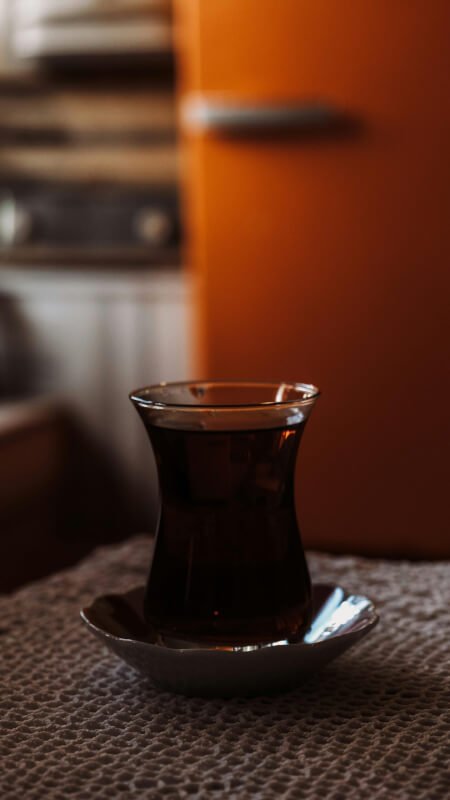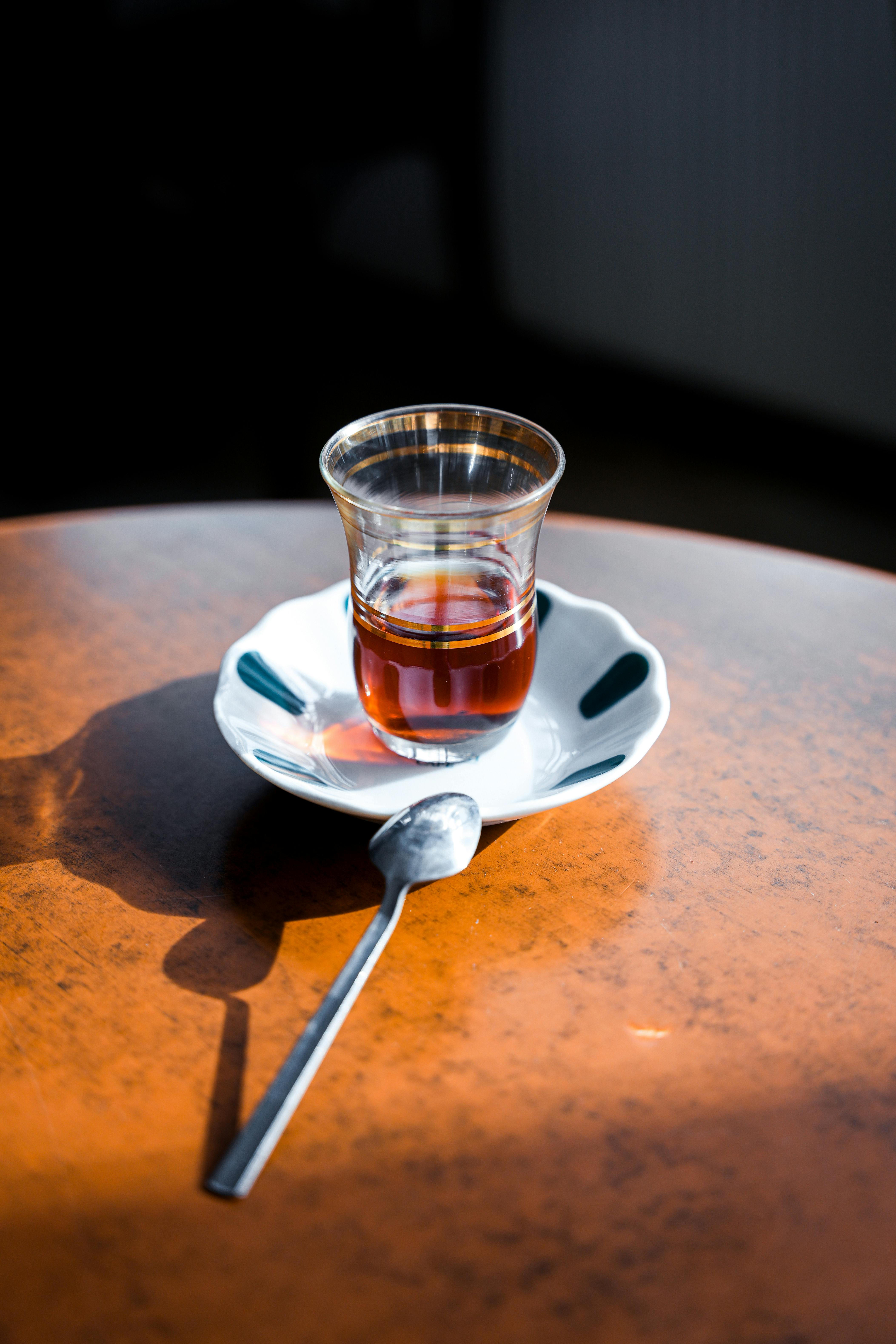When it comes to choosing high-quality specialty tea, it’s easy to get overwhelmed amidst the vast array of options. But fear not, as this article is here to guide you through the process of identifying the crème de la crème. From understanding the factors that contribute to quality, such as the origin and processing methods, to honing your taste buds to discern the nuances of flavor, we’ve got you covered. So, grab yourself a cup of tea and get ready to embark on a delightful journey of tea exploration.

Understanding Specialty Tea
Specialty tea is a category of tea that refers to high-quality, carefully cultivated tea leaves that offer unique flavors and aromas. Unlike mass-produced teas that are often made from lower-grade leaves and processed with machinery, specialty teas are crafted with great care and attention to detail. These teas are often sourced from specific regions known for their exceptional tea production and undergo rigorous quality control to ensure their excellence.
Different types of specialty tea
Specialty tea encompasses a wide range of options, each with its own distinct characteristics and flavors. Some popular types of specialty tea include green tea, black tea, oolong tea, white tea, and herbal tea. Each variety has its own unique processing method, resulting in different levels of oxidation and flavors. For example, green tea is minimally oxidized, resulting in a light and fresh flavor, while black tea is fully oxidized, offering a bold and robust taste. Exploring the different types of specialty tea is a delightful journey that allows you to discover your preferred flavors.

Benefits of specialty tea
In addition to their delicious and diverse flavors, specialty teas also offer numerous health benefits. They are rich in antioxidants, which can help protect against free radicals and promote overall wellness. Specialty teas also contain various phytochemicals that may have positive effects on heart health, digestion, and cognitive function. Additionally, many specialty teas have calming and soothing properties, making them a perfect beverage for relaxation and stress relief. Incorporating specialty tea into your daily routine can be a wonderful way to prioritize self-care and enhance your well-being.
Factors Affecting Tea Quality
When evaluating the quality of specialty tea, several factors come into play. These factors determine the overall taste, aroma, and appearance of the tea. By understanding and considering these factors, you can make informed choices and select teas that meet your preferences.
Origin of the tea
The geographical location where tea is grown can significantly impact its quality. Different regions have varying soil, climate, and altitude, which influence the characteristics of the tea leaves. For example, teas grown in high-altitude regions tend to have a more delicate flavor and aroma, while teas from low-altitude regions may be bolder and stronger in taste. Some renowned tea-producing regions include Darjeeling in India, Yunnan in China, and Uji in Japan. Exploring teas from different origins allows you to experience the unique flavors of each region.
Tea leaf appearance
The appearance of tea leaves can provide valuable insights into their quality. Whole leaves or large leaf fragments are generally considered higher quality than small, broken leaves. Whole leaves unfurl during steeping, allowing the flavors and aroma to fully develop. Additionally, uniformity in the size and shape of the leaves indicates a carefully processed tea. The color of the leaves can also indicate the level of oxidation, with lighter leaves usually signifying less oxidation and a more delicate flavor.
Aroma of the tea
The aroma of specialty tea plays a significant role in the overall sensory experience. High-quality teas have a complex and enticing aroma that can range from floral and fruity to earthy and nutty. The aroma should be fresh and vibrant, indicating that the tea has been properly stored and handled. Avoid teas with musty or stale odors, as these may indicate poor quality or improper storage conditions.
Infusion color
When steeped, specialty teas exhibit a specific infusion color that can vary depending on the type of tea. Clarity of the liquid is an important factor, with high-quality teas typically producing clear and bright infusions. The richness and depth of the color can also indicate the strength and flavor profile of the tea. It’s crucial to note that natural teas should not have any unnatural tinges or discoloration.
Taste and flavor
The taste and flavor of specialty tea are perhaps the most crucial factors in assessing its quality. A high-quality tea should have a well-balanced flavor profile, with no overpowering or unpleasant tastes. The flavors should be complex and multi-dimensional, allowing you to detect subtle nuances in every sip. Additionally, specialty teas should deliver a smooth and enjoyable drinking experience, without any bitterness or astringency.
Authenticity and certifications
When purchasing specialty tea, it’s important to ensure its authenticity and certifications. Trusted vendors and sources can provide reassurance that the tea has been carefully sourced and meets certain quality standards. Look for teas that have undergone third-party certifications, such as Organic, Fair Trade, or Rainforest Alliance certifications. These certifications can offer peace of mind that the tea has been produced sustainably and ethically.

Evaluating the Origin of the Tea
The origin of the tea plays a significant role in its quality and flavor. Various factors associated with the geographic location impact the characteristics of the tea leaves.
Geographic location
Different tea-producing regions have their own unique qualities and flavor profiles. For example, teas from Darjeeling, India, are known for their delicate and floral notes, while teas from Assam, India, offer a robust and malty flavor. Exploring teas from different regions allows you to sample the distinctive flavors associated with each area and find your preferences.
Altitude and climate
The altitude at which tea is grown affects its taste and aroma. Higher altitudes generally result in slower leaf growth and lower temperatures, which can contribute to a smoother and more delicate flavor profile. In contrast, teas grown at lower altitudes often have bolder and stronger flavors. Additionally, the climate in the tea-growing region can impact the overall quality and flavor, with factors such as rainfall, humidity, and temperature all playing a role.
Soil conditions
The soil composition in which tea is grown can have a significant impact on its flavor and quality. Nutrient-rich soil can promote the healthy growth of tea plants and contribute to the development of complex flavors. Additionally, soil pH levels and the presence of minerals and organic matter can affect the overall taste and aroma of the tea. Teas grown in well-maintained and fertile soils tend to have superior quality and exceptional flavors.
Assessing Tea Leaf Appearance
The appearance of tea leaves can provide valuable insights into the quality and processing of the tea.
Whole leaf versus broken leaf
Whole leaves or large leaf fragments are generally a sign of higher-quality tea. These larger pieces allow the tea to unfurl during steeping, releasing their full flavor and aroma. On the other hand, teas with broken leaves may produce a quicker infusion but often lack the complexity and nuance of teas made from whole leaves.
Uniformity in size and shape
Teas made from leaves of consistent size and shape are usually a result of careful processing. This uniformity indicates that the leaves have been sorted and processed with attention to detail, resulting in a more consistent brew. In contrast, teas with irregular or unevenly sized leaves may indicate a lower level of quality control.
Color of the leaves
The color of the tea leaves can vary depending on factors such as oxidation and processing methods. For example, green teas are typically vibrant green in color, while black teas have dark brown or black leaves. The color should be consistent throughout the tea, with no signs of discoloration. Discolored or dull leaves may suggest improper storage or poor quality.
Presence of buds
Teas made from young, tender buds often have a more delicate and nuanced flavor. The presence of buds in the tea leaves indicates that they have been harvested at the optimal time and contribute to the overall quality of the tea. Look for teas that have a good proportion of buds to leaves, as this can enhance the flavor and aroma of the final brew.
Lack of stalks or twigs
High-quality teas generally consist mostly of tea leaves, with minimal presence of stalks or twigs. These additional plant parts can dilute the flavor and impact the overall quality of the tea. A visually clean and tidy appearance, free from excessive stems or twigs, is a positive indication of a well-processed tea.
Appraising the Aroma of the Tea
The aroma of tea is a crucial aspect of the sensory experience and can greatly enhance the enjoyment of the beverage.
Aromatic complexity
High-quality specialty teas offer a diverse and complex range of aromas. Depending on the type of tea, the aroma can vary from floral and fruity to earthy or nutty. The aroma should be inviting and enticing, allowing you to anticipate the flavors that will unfold upon tasting. The presence of multiple layers of scent indicates a tea with excellent aromatic complexity.
Freshness and vibrancy
Freshness is an essential factor in assessing the quality of specialty tea. A high-quality tea should have a vibrant and lively aroma, indicating that it has been well-preserved and properly stored. Avoid teas with musty or stale odors, as these can indicate that the tea has deteriorated over time. Opt for teas that have a fresh and appealing fragrance.
Lack of musty or stale odors
The absence of musty or stale odors is a crucial aspect of evaluating the quality of specialty tea. These unpleasant odors may suggest that the tea has been improperly stored or exposed to humidity, resulting in a decrease in quality and flavor. Always select teas with clean and fresh aromas, as this indicates that they have been handled and stored with care.
Examining Infusion Color
The color of the tea infusion is a visual representation of the flavors and characteristics that will be present in the cup.
Clarity of the liquid
High-quality teas generally produce clear and transparent infusions. The clarity of the liquid indicates that the tea has been well-made and does not contain impurities. Cloudy or hazy infusions may be a sign of poor quality or improper processing. Opt for teas that yield visually clear and bright infusions.
Richness and depth of color
The intensity and depth of the infusion color can provide insights into the flavor profile and strength of the tea. Different types of tea will have varying shades, ranging from pale and delicate to deep and robust. For example, green teas often yield light and pale yellow infusions, while black teas produce dark amber or red-colored liquors. The richness and depth of the color should be appropriate for the type of tea being brewed.
Absence of unnatural tinges
The infusion color of specialty tea should be natural and free from any unnatural tinges. Avoid teas with overly bright or unnaturally dark colors, as this may indicate the presence of additives or low-quality processing. A visually appealing and natural infusion color is an important indicator of the tea’s quality.
Analyzing Taste and Flavor
Taste and flavor are the ultimate indicators of the quality and enjoyment of specialty tea. A high-quality tea will offer a balanced and nuanced flavor profile.
Balance of flavors
Well-crafted specialty teas have a harmonious balance of flavors. No single flavor should overpower the others, and each element should complement and enhance the overall taste. Depending on the type of tea, flavors can range from grassy and vegetal to floral, fruity, or even malty. Seek out teas that exhibit a carefully calibrated balance of flavors.
Complexity and depth
The taste and flavor of specialty teas should go beyond simple one-dimensional profiles. High-quality teas often offer multi-layered and complex flavors, allowing you to detect subtle notes and nuances with each sip. These teas may have evolving flavors that unveil themselves gradually, creating a dynamic and intriguing drinking experience.
Smoothness and lack of bitterness
Smoothness is an essential characteristic of high-quality specialty teas. A well-crafted tea will be free from any harsh or astringent qualities, ensuring a pleasant and enjoyable drinking experience. Ideally, the tea should be smooth and velvety, with no excessive bitterness or astringency. The absence of these negative attributes is a positive indication of a high-quality tea.
Subtle nuances
Specialty teas often offer subtle nuances and flavor complexities that can be a delight to explore. These nuances can range from delicate floral undertones to hints of honey, chocolate, or even spices. Appreciating these subtle nuances adds depth and interest to the tea-drinking experience. Seek out teas that provide a range of flavors and aromas that captivate your senses.
Validating Authenticity and Certifications
Ensuring the authenticity and certifications of specialty tea is important to support ethical and sustainable tea production.
Tea certifications and standards
Look for specialty teas that have obtained certifications that validate their quality and adherence to certain standards. Third-party certifications such as Organic, Fair Trade, Rainforest Alliance, or UTZ provide assurance that the tea has been produced sustainably and ethically. These certifications often involve rigorous inspections and audits that assess various aspects of tea production, including environmental impact, labor practices, and quality control.
Trusted vendors and sources
Purchasing specialty tea from trusted and reputable vendors is crucial to ensure the quality and authenticity of the tea. Look for vendors with a strong reputation for sourcing and selling high-quality teas. These vendors often have direct relationships with tea farmers and ensure proper quality control throughout the production and distribution process. Trusted vendors can provide valuable information and guidance to help you make informed choices.
Product labeling and descriptions
Carefully read the product labeling and descriptions to gather information about the tea’s origin, processing methods, and certifications. This information can assist in making educated decisions about the tea’s quality and authenticity. Look for detailed descriptions that provide insights into the tea’s flavor profile, aroma, and brewing recommendations. Authentic specialty teas are often accompanied by informative packaging that highlights their unique qualities.
Understanding Specialty Tea Grades
Specialty tea grades can provide additional information about the quality and processing of the tea. Understanding these grades can help you make informed decisions based on your preferences.
Ungraded teas
Some specialty teas may not carry a specific grade designation. These teas are typically exceptional in quality and often handcrafted in small quantities. Ungraded teas often offer unique flavors and characteristics that are highly sought after by tea enthusiasts. Exploring ungraded teas can be a delightful adventure in discovering hidden gems.
Whole leaf teas
Whole leaf teas are composed of large, intact tea leaves, often handpicked and carefully processed. These teas are considered high quality and offer a superior flavor experience. Whole leaf teas unfurl during brewing, allowing the full flavors and aromas to develop. Investing in whole leaf teas is a great way to experience the nuanced complexities of specialty tea.
BOP and BOPF grades
BOP (Broken Orange Pekoe) and BOPF (Broken Orange Pekoe Fannings) grades are commonly used for black teas. These grades consist of smaller, broken tea leaves that infuse quickly and yield a strong and robust flavor. While not as visually appealing as whole leaf teas, BOP and BOPF grades are widely used and provide a bold and full-bodied cup of tea.
Broken leaf grades
Broken leaf grades fall between whole leaf teas and smaller broken leaf grades. These teas have larger leaf fragments and are often used for varieties such as oolong teas. Broken leaf grades can still offer excellent and nuanced flavors, especially when sourced from high-quality producers.
Dust grades
Dust grades consist of the smallest particles of tea leaves and are often used in tea bags or for making masala chai blends. While dust grades may not offer the same flavor complexities as whole leaf teas, they provide a convenient brewing option that yields a quick cup of tea. Dust grades can still be of good quality, especially when sourced from reputable tea producers.
Additional Considerations
When exploring specialty teas, there are a few additional considerations to keep in mind to enhance your tea-drinking experience.
Personal preferences
Every individual has unique preferences when it comes to taste and flavor. It’s important to explore and experiment with different teas to discover the varieties that resonate with your personal preferences. Whether you prefer bold and robust flavors or delicate and floral notes, specialty teas offer a diverse array of options to cater to all tastes.
Price versus quality
While price can sometimes be an indicator of quality, it’s not always the sole determiner. It’s essential to consider the overall value and quality of the tea rather than solely focusing on the price tag. Some exceptional specialty teas may be more expensive due to factors like limited availability, handcrafted processing, or unique flavors. Assess the overall quality and experience, and choose teas that offer the best balance between price and value.
Evaluating customer reviews
Customer reviews can provide valuable insights into the quality and flavor of specialty teas. Reading reviews from other tea enthusiasts who have tried the tea can help inform your decision. Look for reviews that provide specific details about the taste, aroma, and overall experience of the tea. However, it’s important to remember that taste preferences are subjective, so take reviews as guidance rather than absolute truth.
Experimenting with different teas
Embrace the opportunity to explore and experiment with different types of specialty tea. From green tea to black tea, oolong to herbal blends, there is a vast world of flavors waiting to be discovered. Try teas from different regions, processing methods, and flavor profiles to broaden your tea-drinking horizons. Whether you enjoy a soothing cup of chamomile or a robust cup of Assam black tea, the possibilities are endless.
In summary, understanding specialty tea involves considering various factors such as origin, appearance, aroma, infusion color, taste, and flavor. Assessing these aspects allows you to make informed choices and select high-quality teas that suit your preferences. By exploring the diverse flavors and varieties of specialty tea, you can elevate your tea-drinking experience and embark on a delightful journey of taste and discovery.


